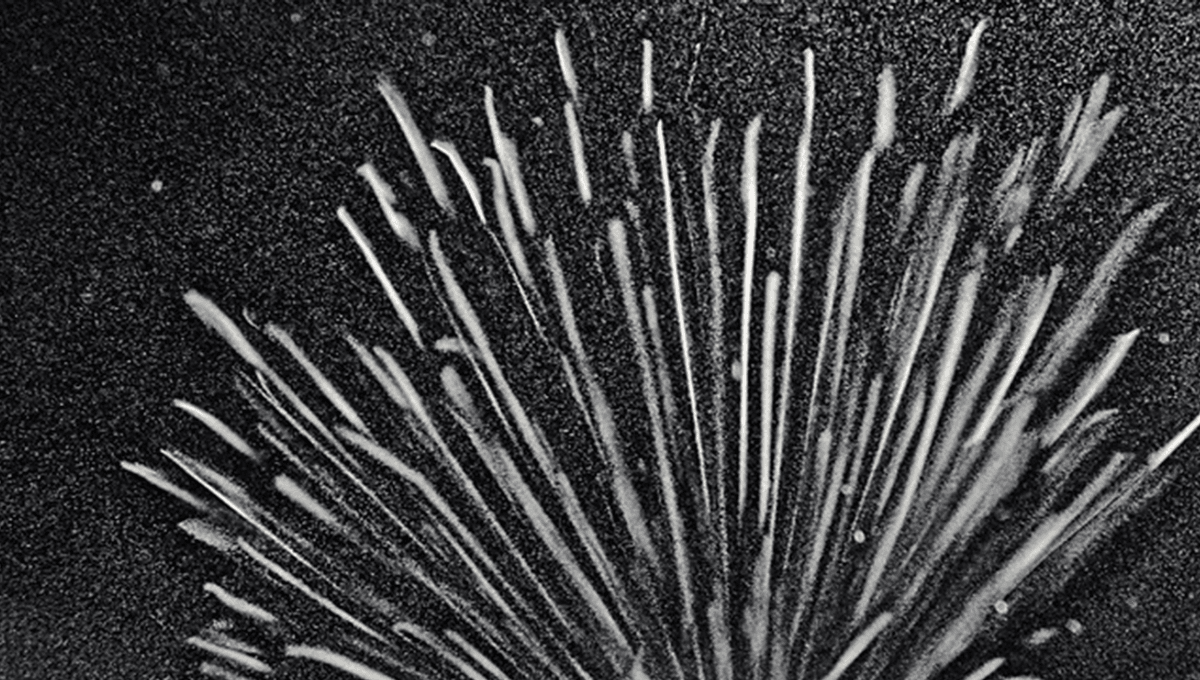
While you’re walking around you don’t notice it, but muons are passing through your body at the rate of about 10,000 muons per minute.
These fermions, identical in most respects to electrons except for their higher mass and baffling magnetic moment, are created in the Earth’s atmosphere as cosmic rays collide with it. Despite only existing for about 2.2 microseconds, it is possible to detect them from the Earth’s surface and below.
In fact, by detecting muons you can get an idea of the shape of underground structures, known as muon tomography.
“Like X-rays, which can penetrate the body and allow bone imaging, these elementary particles can maintain a quasi-linear trajectory through hundreds of metres of stone before decaying or being absorbed,” one team, which claimed evidence for a hidden chamber beneath the Great Pyramid of Giza using this method, explained in a study published in Nature. “By recording the position and the direction of each muon that traverses its detection surface, a muon detector can distinguish cavities from stone.”
While these sorts of muon detectors are expensive, it is possible to create your own muon detector at home, at incredibly cheap costs. So how do you make one?
How to make a particle detector cloud chamber at home
If your aim is to detect any old particles that happen to be passing through your kitchen, that’s actually pretty easy. All you need to do is make a “cloud chamber”, and for that you only need a few cheap and readily available parts, including a plastic tub or cup, some felt or a sponge, some isopropyl alcohol, and the most difficult part to obtain; dry ice.
By soaking the felt or sponge in the alcohol and securing it to the top of the tub, then placing the tub on top of a surface above the dry ice, you create your cloud chamber.
At the top of the chamber, the liquid slowly evaporates into a gas. But as it sinks to the bottom of the chamber, the cold ice makes it want to turn back into liquid form. In the bottom of the chamber, the air becomes supersaturated. When a particle travels through it, it can knock off some of the electrons of the molecules within the gas. As the molecules become charged, the alcohol gas becomes attracted to it and forms tiny droplets, resulting in streaks in the cloud chamber showing you the particle’s path.
In this setup, you can see all sorts of particles, including radon atoms – the larger streaks you see – and muons – the small long streaks. It’s pretty cool.
How to make a muon detector
If you’re mainly interested in muons, there is another clever trick you can do to find them, again fairly simply. Muons, when they reach you or the ground, are traveling at nearly the speed of light. While this sounds like it might make things more complicated for you, hoping to detect a muon, it actually makes the operation much simpler, thanks to Cherenkov radiation.
The speed of light in a vacuum is the absolute speed limit of the universe. Nothing will go faster than 300,000 kilometers per second (186,000 miles per second), according to Einstein’s work, as it would require an infinite amount of energy to do so. However, that doesn’t mean that light can’t be beaten in terms of speed under the right set of circumstances, and when that happens something strange called the “Cherenkov effect” can take place. In water, for example, light is slowed down to a sluggish 200,000 kilometers per second (124,274 miles per second).
This does sometimes happen. In 1934, Soviet physicist Pavel Cherenkov witnessed what happens when it does, after bombarding water with radiation. A blue light, now known as Cherenkov light or Cherenkov radiation, was emitted from the water.
In order to detect muons, all you need to do is to have a medium that light travels more slowly through than the particles do. And you probably have access to water, if you’re looking up how to make a particle accelerator rather than actively searching for water.
By using a photomultiplier in a closed container devoid of light, you can detect the Cherenkov radiation as it is produced by muons moving through the liquid contained within.
In this set up you won’t see the cool streaks of the cloud chamber, but will be able to detect a particle generated by cosmic rays colliding with our atmosphere. Which, I’m sure you’ll agree, is pretty neat.
Source Link: It Is Surprisingly Easy To Build Your Own Particle Detector At Home